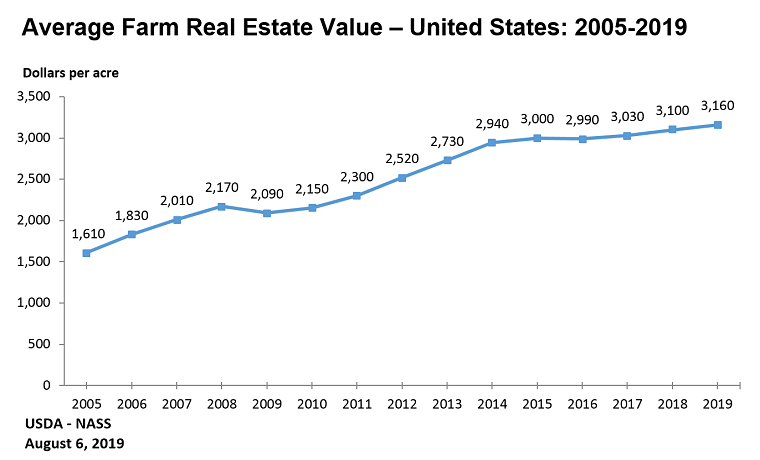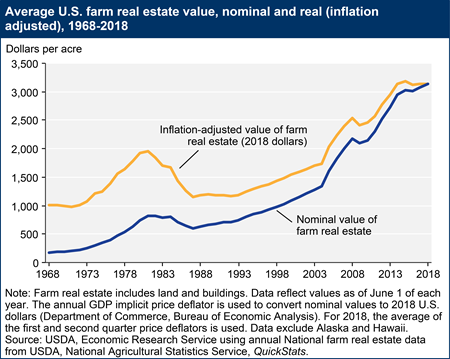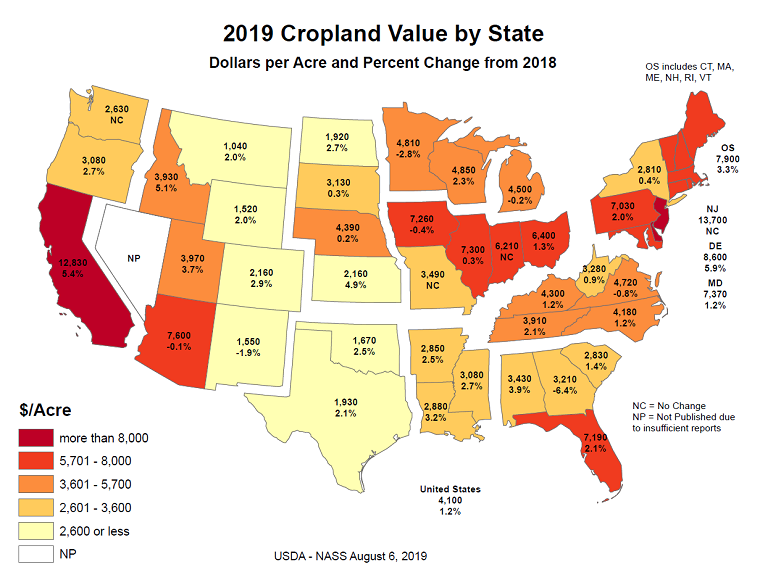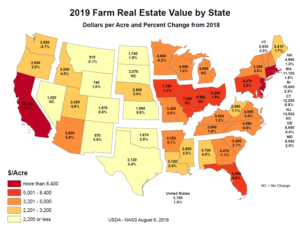Whether you’re growing crops or raising livestock, having adequate land is essential. But what’s the best way to acquire the land your operation needs: buying farmland or renting it?
Consider these pros and cons for both options:

Buying land
Pros:
- Purchasing land gives you control over your destiny. You’re in charge of the management decisions, whether it’s choosing the crop rotation, determining other farm practices or improving the property. You don’t have to worry about land-rent contracts, renewals or terminations.
- You won’t have to be concerned that the land will be rented to someone else, which could, in turn, negatively affect the rest of your operation.
- You’ll build equity in your land, which allows you to borrow money more easily.
- You’ll not only benefit from improvements you make on your own property but also build long-term wealth from land ownership.
Cons:
- Buying land is expensive – and getting more so all the time. Getting financing for a multi-million-dollar land purchase can be a hurdle. Moreover, buying land not only uses up your available capital but can tie up funds. That can lead to cash-flow problems, leaving fewer dollars for machinery or input needs or even other expansion opportunities.
- Large land payments can limit your farm’s profitability. They’re an especially steep barrier for beginning farmers.
- Farmland ties up a significant amount of wealth, which can restrict your ability to fund a retirement program or make other market investments.
- A land purchase could open a whole host of issues that you’re responsible for, including soil, water, environmental and zoning problems.
- Because farmland turnover is low, opportunities to buy are limited.
Renting land
| Region | Farm real estate value | Cropland value | Cropland rent | Pasture value | Pasture rent |
|---|---|---|---|---|---|
| Corn Belt | 6,430 | 6,710 | 204 | 2,470 | 39 |
| Pacific | 5,550 | 6,780 | 272 | 1,650 | 12 |
| Northeast | 5,100 | 5,480 | 80.5 | 3,480 | 36.5 |
| Lake States | 4,890 | 4,800 | 153 | 2,110 | 34 |
| Southeast | 3,870 | 3,990 | 84.5 | 3,990 | 20 |
| Appalachian | 3,820 | 3,920 | 99.5 | 3,350 | 21.5 |
| Delta States | 2,980 | 2,820 | 111 | 2,550 | 18 |
| Northern Plains | 2,170 | 2,830 | 102 | 1,070 | 21 |
| Southern Plains | 2,220 | 2,020 | 40 | 1,710 | 7.9 |
| Mountain | 1,140 | 1,810 | 90.5 | 634 | 5.3 |
| U.S. total (48 States) | 3,140 | 4,130 | 138 | 1,390 | 12.5 |
| Source: Land Values, 2018 Summary, USDA, National Agricultural Statistics Service, August 2018. Annual data by region and State are available from QuickStats. |
|||||
Pros:
- Renting is much cheaper than purchasing land. That frees you up to buy equipment, livestock or crop inputs or even expand your production.
- Farmland leases typically are either cash rent, flex rent or crop share. You can negotiate one that works best for you.
- If you’re a beginning farmer, renting land is the more affordable way to get into farming. A knowledgeable landlord may even be willing to offer insights or management skills.
- When it’s time to renew a lease, it’s easier to negotiate your financial obligation for next year than for a long-term land mortgage.

Cons:
- Renting often involves a short-term contract. A year’s lease won’t give you enough time or incentive to invest in support structures or property improvements. If you plan to grow a permanent crop, you often need several years to reap a gain on your investment.
- Your landlord could decide not to renew your lease.
- Many landlords are a generation or two removed from agriculture. In fact, most rented acres are owned by non-operator landlords. They may not always understand farm economics or your needs and perspective. Relationships are key, so you’ll have to put in effort to keep your landlord informed and happy.

Before you decide
Before you decide whether to rent or purchase land, do your homework. Learn all you can about the property you’re interested in. Is the soil suitable for your farming plans? Are there zoning restrictions that would impact your operation? Who would your neighbors be?
Talk to a business, financial or legal advisor, even your lender, to weigh the pros and cons and how they fit your specific operation and goals. It’s also a good idea to connect with a real-estate agent who’s knowledgeable about farmland and who’ll offer pointers for you to consider.
Contact a K·Coe Isom ag consultant for an expert and objective perspective to help determine which option will work best for you.









